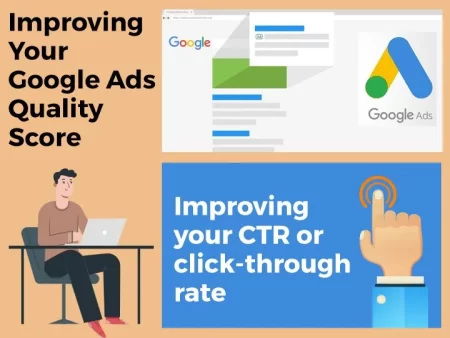 Your CTR or click-through rate is an estimate of the likelihood that someone is likely to click on the ad you have placed when it appears for one of your selected keywords. Your quality score is calculated on a scale of 1 to 10 with 1 being the lowest and 10 as the highest. Your quality score is the rating from Google for the overall user experience from the ads and landing pages you have provided as the users search for the related keywords. In this article, we will see whether your landing pages and ads are useful to people looking at them.
Your CTR or click-through rate is an estimate of the likelihood that someone is likely to click on the ad you have placed when it appears for one of your selected keywords. Your quality score is calculated on a scale of 1 to 10 with 1 being the lowest and 10 as the highest. Your quality score is the rating from Google for the overall user experience from the ads and landing pages you have provided as the users search for the related keywords. In this article, we will see whether your landing pages and ads are useful to people looking at them.
Improving the quality score
If you are looking to improve the quality score, take a close look at the different factors mentioned in this article on an independent basis and as a whole. Keep in mind that Google uses unique algorithms for deciding the quality score of your keywords. Improving the credit score means some adjustments to the keywords, ad text, and even the site. CTR or the clickthrough rate is a ratio that indicates how many times the users seeing your ad will click it. CTR may be used for gauging how the ads and keywords are performing. Here are some factors affecting your quality score.
1. Improving your CTR or click-through rate: Your expected CTR or click-through rate is an estimate of the possibility of people clicking your ad as it appears for the selected keywords. It is assumed that the search term matches your preferred keyword exactly and does not take into consideration other factors such as auction time and the type of device used. When you are looking for the keyword statuses you will find three kinds of statuses for the CTRs. “Average” and “Above Average” statuses mean there is no significant problem with the CTR concerning the other keywords across Google Ads. “Below Average” status indicates that you need to consider changing the ad text.
2. Improvement in ad relevance: Another way of improving the quality score is by taking into account ad relevance. It refers to how well a certain keyword matches the ad message. It is similar to the qualification criteria for the CTR. You will also see the three possible statuses Average, Above Average, and Below Average. You need to create more specific advertisements as it improves the relevance of the ad to the selected keyword.
3. Improvement in landing page experience: If you are trying to improve your quality score for specific keywords you need to compare them with the copy or words you have used on the landing pages together with the overall UX. Google will consider how useful the landing page is for the people clicking on the ad. Is it well organized? Does it contain text that is in line with the search terms? How clear is the page in terms of the directions it provides? If a person clicks an ad that is matching their search term but is unable to find the relevant info he is looking for and is bombarded with slow loading times and pop-ups, it will affect the UX negatively. It leads people away from the product and your organization.
4. Grouping the keywords for improvement: When you develop the keywords and ads you are creating ad groups for them as well as allowing them to sit in. By using different ad groups, you can divide the keywords into similar categories that are more in line than having just a couple of ad groups. If your keywords are divided into small and focused ad groups, you will be more empowered to write relevant ad text that corresponds to the top-quality landing pages.
Being aware of how you can improve your quality score is as easy as selecting and grouping the keywords that are relevant to the landing pages. It also means that you need to write ads in line with the landing pages and make sure that the landing pages are useful to prospective customers. If you are looking for help from professionals for this and your business operates from Tampa, FL area get in touch with Affordable SEO Company Tampa.
